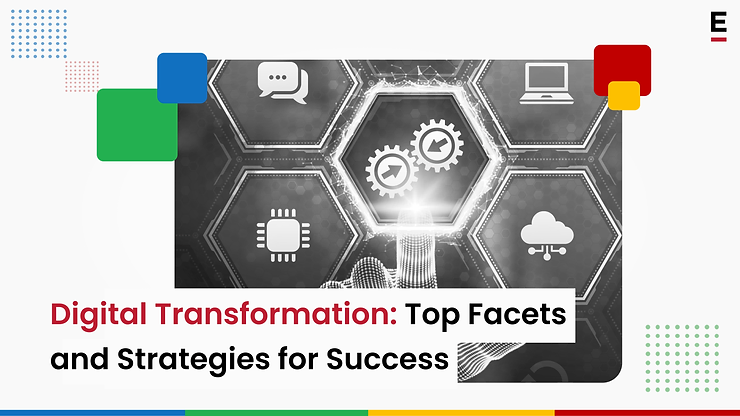Digital Transformation: Top Facets and Strategies for Success

- Business Processes: Optimizing or Complicating?
Yes, efficiency is no longer an advantage; it’s a matter of survival. However, as technology advances at breakneck speed, companies often grapple with an entirely new set of challenges. For instance, consider the widespread adoption of automation and Artificial Intelligence (AI). While these technologies can eliminate the tedium of manual tasks and reduce human error, they also demand significant investments in infrastructure, training, and maintenance. Not to overlook the added vulnerability of cyberattacks and breaches.
- Business Models: Innovation or Disruption?
The digital era has spawned a plethora of new business models fueled by the rapid shift in consumer preferences. As businesses attempt to iterate in this landscape, they must decide whether to disrupt or risk being disrupted. The question remains: Is pursuing new business models a viable path to success, or does it merely hasten the demise of tried-and-tested strategies? To navigate this dichotomy, businesses must balance embracing innovative business models and preserving the core values underpinning their success.
- Domain Expertise: Friend or an Adversary?
On the one hand, companies with an understanding of their industry and its unique challenges are well-positioned to identify opportunities for digital innovation. On the other hand, domain expertise can also create a sense of complacency, leading businesses to cling to outdated practices. This problem is further compounded by the iteration rate outpacing most professionals’ ability to keep up. As a result, organizations are increasingly turning to external partners, consultants, and competitors to fill gaps in their digital know-how.
- Culture and Organization: An Ongoing Dilemma
- The Complete Business Strategy Transformation
Traditional business planning is like trying to hit a moving target. To navigate this tightrope, businesses must engage in rigorous market analysis, identify emerging opportunities, and develop a flexible strategy. Not to forget timely reevaluation of objectives, embracing agile methodologies, as well as being prepared to pivot on a quick dime.
- Step into the Business Operations Realignment
- Practices for Agility, Experimentation, and Risks
- Sustainable Change with a Flexible Technology Core
- Empower the Workforce or Manage the Resistance
- Join the Dots to Achieve Digital Transformation
But how do you enable Digital Transformation within your organization? The secret recipe is connecting the five dots outlined above! While it’s evident that there’s no one-size-fits-all approach, businesses must also work to build a tailored roadmap that addresses their unique set of challenges, opportunities, and circumstances.
In conclusion, a Digital Transformation journey requires a steadfast commitment to growth, innovation, and resilience. It entails fostering a culture that empowers individuals to think creatively, embrace change, and take calculated risks. As we reflect on the transformative power of digital technologies, it’s natural to wonder what lies ahead on the horizon. In our next blog post, we will dive into the key technology drivers of Digital Transformation, as well as trends and innovations that shape the business’s future. Join us as we unravel the exciting possibilities and discover how these transformative technologies can propel organizations to new heights in the digital era. Stay tuned for an insightful discussion on the technological frontiers that await us in our continued exploration of Digital Transformation.
Read other Extentia Blog posts here!

